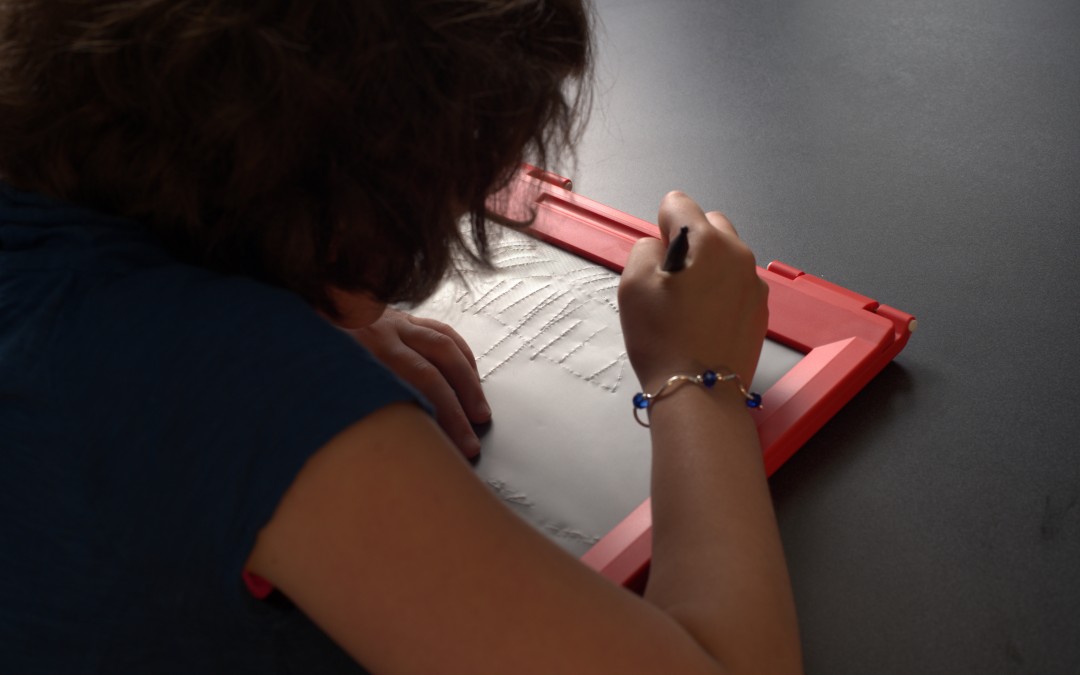
by Tasha Chemel | Dec 12, 2014 | Tactile Graphics
Tasha Chemel is a blind artist and writer. She is currently pursuing her Master’s degree at Harvard Graduate School of Education, where she will study adolescent literacy and creative writing. She also hopes to develop innovative opportunities for blind people to participate in visual culture. Her poems have been published in Barking Sycamores, Subliminal Interiors, Elephant Journal, and Wordgathering. When I mention that I am a visual learner, even though I am blind, most sighted people give me the verbal equivalent of a raised eyebrow. But if you’re blind, you might know exactly what I mean. Is it easier and more enjoyable for you to read a book in Braille or using text to speech, rather than an audio book? Do you prefer reading tactile maps to listening to auditory directions? If you answered yes to either of those questions, you’re probably a visual learner, too. You might be wondering why I call text-to-speech visual, when it is clearly auditory. When I was in elementary and middle school, I was totally fine using audiobooks as sources for reports and presentations. But as texts grew more complex, I realized that I preferred using Braille because I had much more control over how I interacted with a text. For example, I could pause on a particular word and concentrate on its spelling. In addition, as I used text-to-speech more, I and more, and at faster and faster rates, I found that I could exercise that same level of control. There is something about being able to scroll through a text document or a Webpage, letter by letter and word by word,...

by Mike Rosen | Apr 21, 2014 | Tactile Graphics
First a disclaimer. We at E.A.S.Y. LLC have probably taken note of the tactile graphics skills and attitudes of close to two hundred BLV people, and half again as many sighted individuals with personal and professional ties to the BLV world. Despite this exposure, I can’t claim to be a scholar of this topic. I’m not a perceptual psychologist and I haven’t done controlled studies of the drawing capabilities of people with limited or absent vision. (Partly, that’s because the 24-7 task of building our start-up and developing our products has made it difficult to find the time for research – a painful truth for a life-long academic.) So there; I’ve implicitly apologized for any inaccurate observations or naive interpretations presented below. Reader beware. Mike Coleman from the UVM Engineering Faculty; Susan Edelman from Education; Gayle Yarnall, access technology consultant and advocate in Massachusetts; and I do have a small pilot project underway, funded by the UVM REACH Program. We’re trying to get a sense of the major influences on kids’ ability to explore and understand tactile graphics, and their skill in making original raised-line drawings. We’re doing home-made evaluations of a dozen BLV children and youth in Vermont, New Hampshire and Massachusetts with the cooperation of numerous teachers and parents. In these trials we are sampling the tactile, spatial and linguistic experiences and abilities of BLV youngsters in the hopes of predicting what skill with tactile graphics might reasonably be expected from each of them. By the end of this week (April 25th six of our participants, ranging in age from 3rd that the primary outcome of this...





Recent Comments